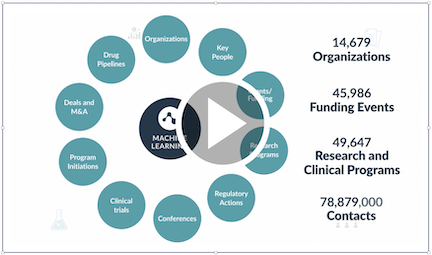As of 2018, more than 3,200 Emerging Biopharma (EBP) companies (characterized by R&D spend of less than $200 million or prescription sales up to $500 million) have an active R&D drug pipeline. Of the 8,700 products or programs in active development, ranging from discovery to registration, 80% of these programs are attributable to EBPs. In addition, EBP companies conducted 65% of all clinical trials and are now running more trials than larger companies across all phases. This makes EBPs attractive accounts to target for deals and partnerships.
Emerging Biopharma (EBP) Companies are Dominating R&D
| Active Development | EBPs have nearly 80% of pipeline products in development |
| Growing Share of Late-Stage R&D | EBPs accounted for 73% of the total late-stage R&D pipeline in 2018, a growth rate of 12% over ten years |
| Higher Success Rates | EBPs achieved a composite success rate of 17.2%, vs. 12.1% of other company types |
Win more business by focusing on EBPs
While big pharma may represent the most promising candidates from this pipeline, partnerships for these candidates are the most competitive. So getting to these less competitive EBP opportunities at the right time—often during the early research phase—can help your team drive growth. But these opportunities are primarily only available to those commercial teams that can rapidly identify and qualify these opportunities at the ideal moment.
Why it’s so hard to identify and qualify EBP opportunities
There are many ways commercial teams go about identifying and qualifying opportunities. Some teams rely heavily on conferences, while others mine their professional networks to be alerted to happenings within their target accounts. Most devote a lot of time to reading news and press releases, as well as scouring industry sites and newsletters to try to stay on top of relevant events. While much of what they find is interesting, it’s not likely to be a match for their specific capabilities. It’s not meaningful work and, oh yeah, did we mention that it’s a lot of wasted effort?
It’s complicated
There are a host of qualifications that are unique to you, but trying to answer these questions makes the search for your most targeted opportunities incredibly complicated. For example:
- Does the research program or clinical trial match your test and product capabilities?
- Is the program relevant to the therapeutic areas you’re targeting?
- Does the clinical development activity show future promise?
- Do the biomarkers under investigation show future promise?
- Does the research or clinical trial sponsor have adequate funding?
If you think a robust, deliberate, and modern approach might help, you’re in good company. There has to be a better way (hint: there is!).
The need to scale to manage the data burden
Timely outreach to the most qualified biopharma leads is the goal. But targeting these partnering opportunities pre-IND or at the start of the right clinical trial stage requires continuous monitoring. The scale of this challenge is daunting:
- There’s a massive, broad-based, and unstructured worldwide biomedical evidence landscape of vital information including clinical trials, research publication news, conference posters, and more.
- There are 1.4 million papers published every year, or the equivalent of five thousand a day.
- 30,000 publications referencing biomarkers are produced weekly.
- Simple searches are insufficient because mentions far outweigh relevant or measured evidence, making two-thirds of manual searches irrelevant.
How do I find relevant EBP programs at the optimal time so I don’t miss the deal window?
Machine learning technology is being used in numerous areas to make sense of enormous data sets, such as in healthcare where it is being deployed to enable cutting-edge diagnostics and a myriad of other applications. The biomedical landscape is just too large for humans to meaningfully evaluate. Machine learning can also be used to connect research and clinical product and services teams to programs that are an exact fit, based on disease state, technology, drug class or MOA, and many other parameters.
Real-time notifications for companies that match your ideal profile alert you to news about funding, collaborations, drug program stages and results, new hires, and other indicators that provide clues that companies are moving forward with new programs. With the right timing indicators, organization insights, and relevant contacts, you have everything you need to reach out and kick off deals.
Want to upgrade your prospecting and lead gen processes for the better (and for good)?
Establishing best practices for your sales and marketing team’s day-to-day prospecting and lead gen workflows can
help everyone on your team achieve rockstar results.
To learn how you can identify relevant EBP programs instantly, see the Amplion platform in action.
Sources
- IQVIA Institute, Emerging Biopharma’s Contribution to Innovation: Assessing the Impact, 2019
- U.S. Department of Health & Human Services, U.S. National Library of Medicine


